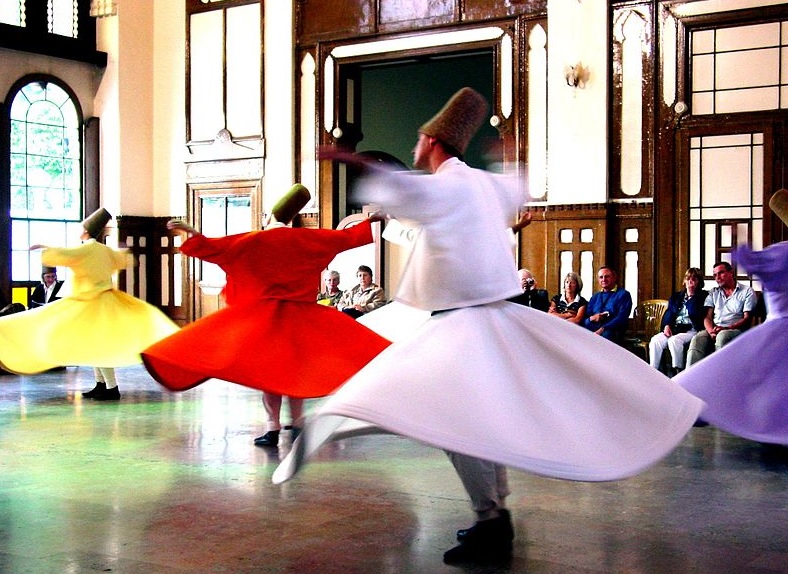Module 6: Religious and Social Dance
Section outline
-

Image Attribution CC-SA 2.0 Vladimer Shioshivili June 10 2006 The earliest dances were likely tied to religion, using movement as part of rituals. Belief systems embraced dance as a way to connect to higher powers that influenced everyday life. Other religions eschewed dance or banned it for several different reasons. “Religious” can refer to a range of ecclesiastic-ism. Primitive imitative dances and dances to the elements like the sun and rain appealed to nature and the spirits whose benevolence made existence possible. Some dances are indigenous, but others have traveled, morphed, and adapted from earlier roots. By studying religious dance, you gain insight into the worship of different cultures.
All over the world, people dance. Different social dances have different purposes and different values. Sometimes they blend and merge with others to become new dances. But no matter what, we find a connection to others in social dance.
The term folk dance refers to the secular, recreational, and celebratory dance expression of a past or present culture. The term was coined in the 19th century by European scholars studying the culture and art forms of different world regions. These academics viewed the simple, untrained “folk” carrying on their ancestors’ ancient traditions and often wrote condescending descriptions of these activities. The term folk dance was accepted until the mid-20th century, when it was replaced with the more respectful term traditional dance. It can refer to dances of the people and often has a nationalistic purpose. Although they were original dances done by and for the people in their own communities, they are sometimes adapted for performances and performed by trained dancers. It should be noted that not all traditional dancers dropped the designation folk dance; some use the term as a source of pride.
Upon completion of this module, you will be able to:- Demonstrate a culturally informed dance aesthetic.
- Recognize the elements of dance and apply that knowledge to analyze, create and perform dance.
- Describe religious and social dances and illustrate how the dances fit into their world culture.
To achieve these objectives:- Read the Module 6 Introduction
- Read and view the materials in Ch. 6 So You Think You Know Dance
- Complete the assignments.
Module Pressbooks Resources and Activities
You will find the following resources and activities in this module at the Pressbooks website. Click on the links below to access or complete each item.
Background Colour
Font Face
Font Kerning
Font Size
Image Visibility
Letter Spacing
Line Height
Link Highlight
Text Colour
